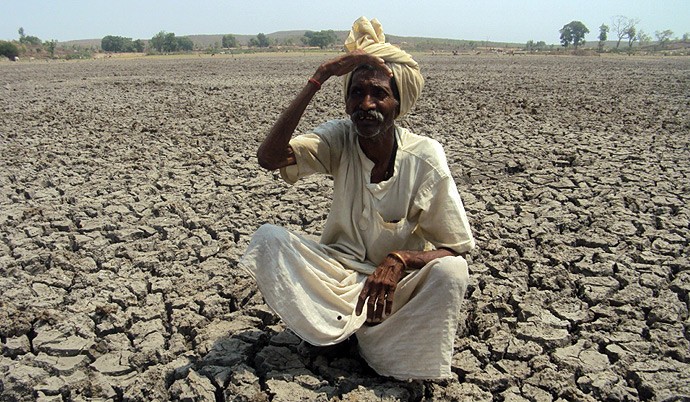More than 7 months after the announcement of demonetisation, its impact is still visible. The protests by the farmers in MP, Maharashtra, Rajasthan and other states agitating due to thefall inprices of various agricultural products is a sign of demonetisation’s continuing impact.

Image Courtesy: Welthungerhilfe
After consecutive years of drought, the Farmers in different states were looking forward to a profitable agricultural year in 2016-17. Though their hopes of good crops have materialised, the prices have fallen so low that in many places farmers are leaving their unsold harvest on the roads. In some cases they are simply leaving the crop un-harvested.
The present crisis comes in the wake of demonetisation and is a direct consequence of it.
While demonetisation was complete, with at least 97% of the currency back with RBI – the remonetisation is not complete even after 7 months. On the even of demonetisation, there was nearly Rs. 18 lakh crore worth currency in circulation in the economy, including the demonetised notes. More than 7 months after the announcement, as on March 26th the currency in circulation is little more than Rs. 15 lakh crore.This means that government still has not replaced 20% of all the cash that has been demonetised.
The pinch of this missing Rs. 3 lakh crore of currency is acutely felt in the rural areas, which are thinly banked and poorly supplied with currency. While, some fall in agricultural prices were anticipated due to bumper crop – the scale of the price drop, much below the production cost, is due to the shortage in cash.
More over, the traders of agricultural commodities, who were badly affected by demonetisation, have not yet recovered. According to senior journalist, Harish Damodaran, the ‘traditional agro commercial capital was dealt a body blow’ with the demonetisation. The traders who stock up during good harvest have been less active due to the lack of liquidity and the damage that has been done to their capital during the demonetisation. As a result of this collapse of the trading capital, a good harvest in production led to the steep fall in farm prices.
The much touted cashless transactions have not come to the farmers’ aid either. Considering that most of the PoS machines are there in urban areas, electronic transactions are of no use to the farmers.
Looking back on last 7 months, it is clear that the promises of demonetisation have not materialised. Demonetisation, which was supposed to cure India of black money, tax evasion, corruption and bribery, terrorism, fake currency and every other problem under the sun – has not only failed in all of the stated objectives, but is now pushing farmers to the brink. Agriculture, which has experienced robust growth in production, is now crippled because of the price crash.
The least that the government can do now is meet the farmer’s demands of increase in Minimum Support Price high enough to make farming profitable and waive off farm loans.
Disclaimer: The views expressed here are the author's personal views, and do not necessarily represent the views of Sabrangindia.